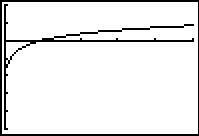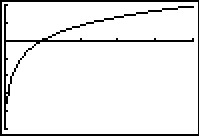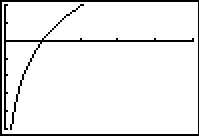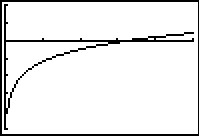Solve the rational inequality. Express your solution on a number line using interval notation.  ? 0
? 0
A. (-?, 1) ? (3, ?)![]()
B. (-?, -3] ? (-2, -1) ? [1, ?)![]()
C. (-?, -3) ? (-1, ?)![]()
D. (-?, 1] ? [3, ?)![]()
Answer: D
You might also like to view...
Use a graphing calculator to graph the given function. Be sure to set the graphic window parameters to the given values.y = 1.2 loge xwindow dimensions [xmin, xmax, ymin, ymax] = [0, 5, -5, 2]x-scale (xscl) = 1; y-scale (yscl) = 1
A. 
B. 
C. 
D. 
Solve by the method of your choice. Identify whether the system has no solution or infinitely many solutions, using set notation to express the solution set.4x + y = 11y = 12 - 4x
A. {(x, y)  }
}
B. ?
C. {(5, -9)}
D. {(0, 11)}
Approximate f(x) to four decimal places.f(x) = 3.6e-2.1x, x = -1.9
A. -0.0666 B. -194.5976 C. 194.5976 D. 0.0666
Use elimination to determine whether the system of equations has no solutions, one solution, or infinitely many solutions.4x + 5y = 1016x + 20y = 40
A. Infinitely many B. One C. No solutions